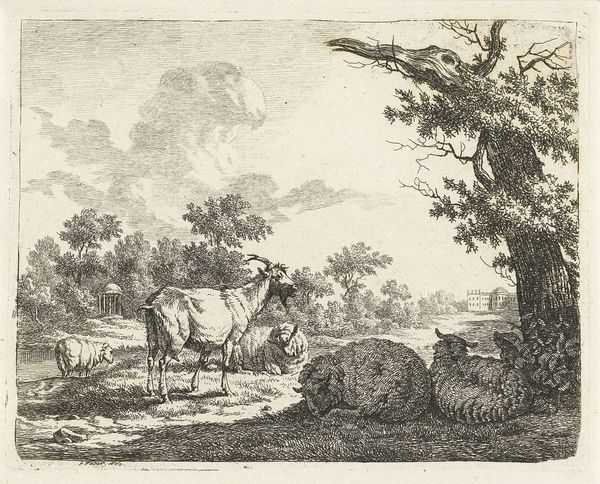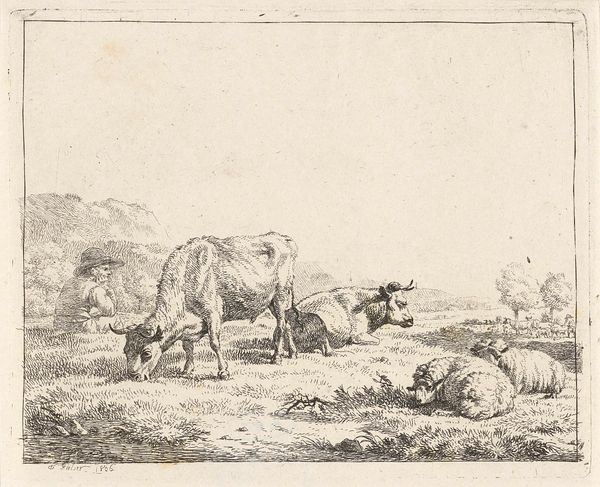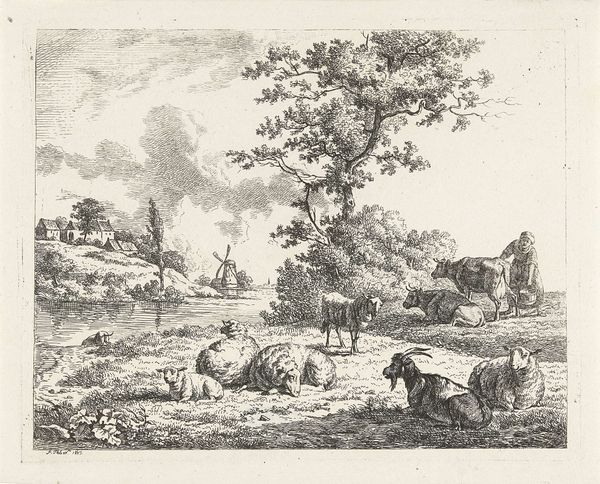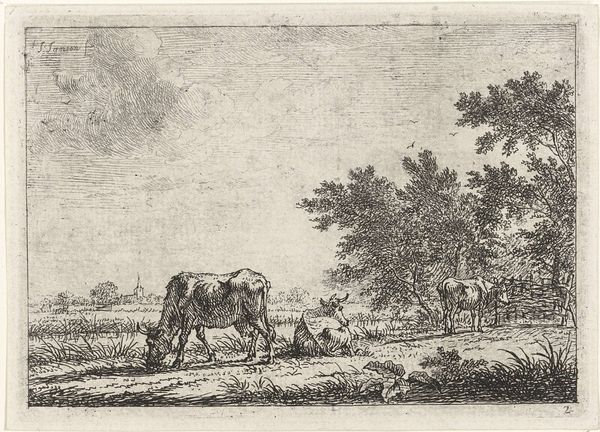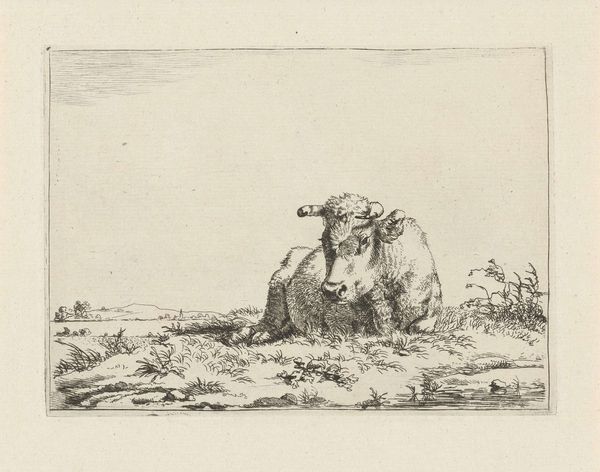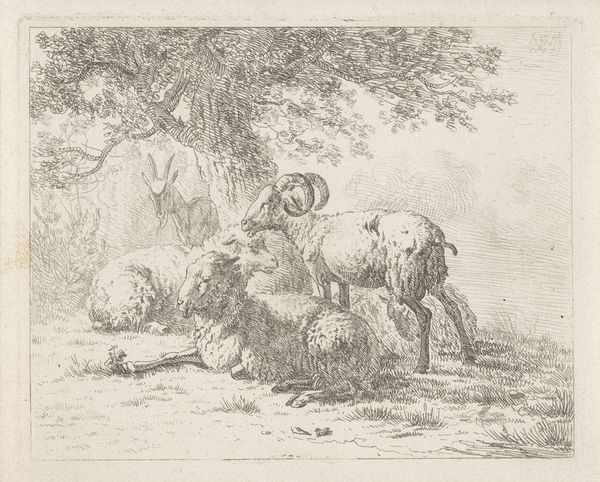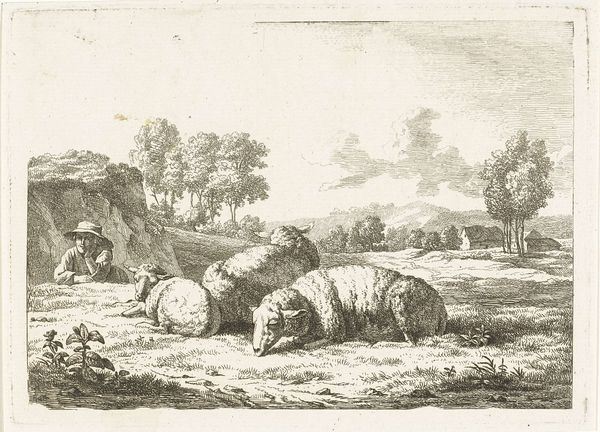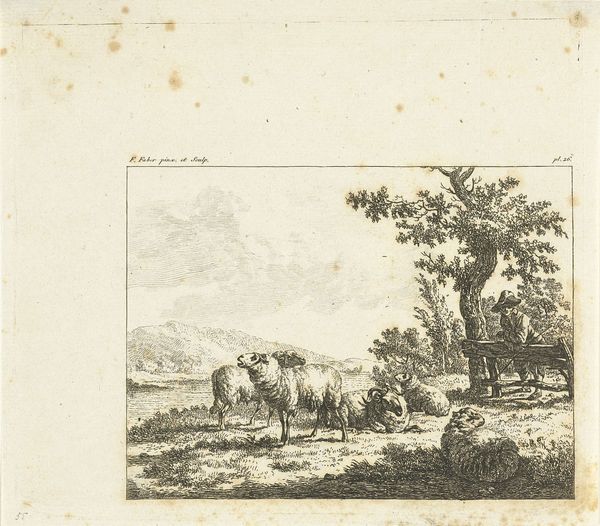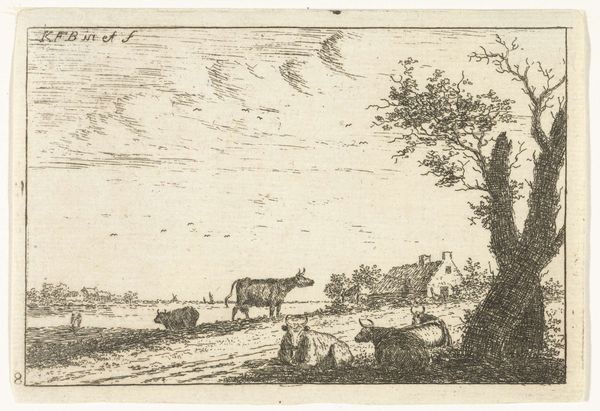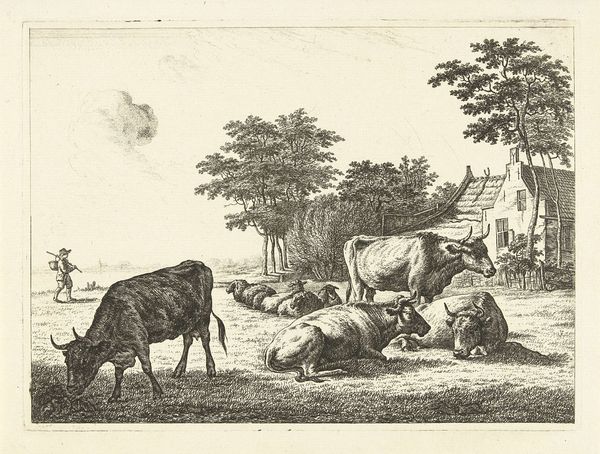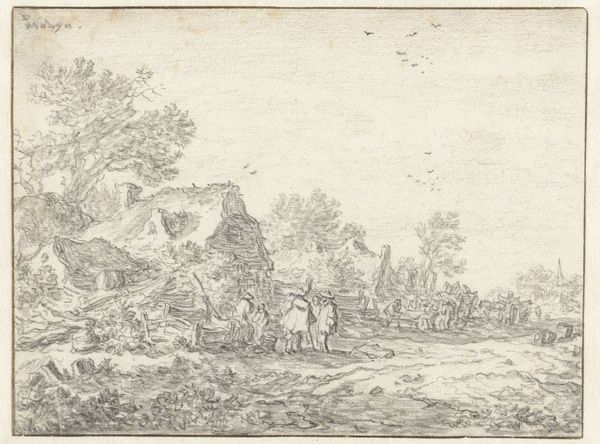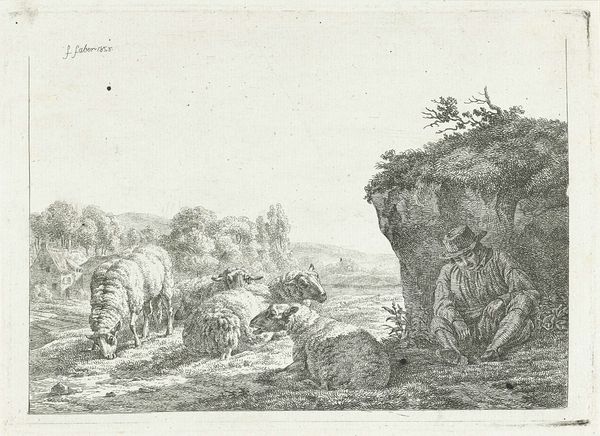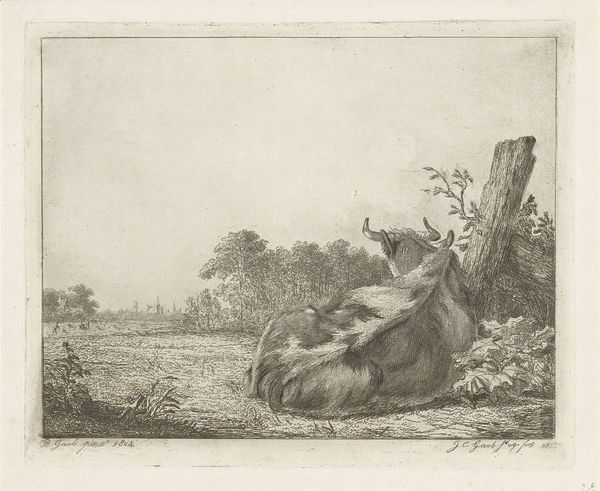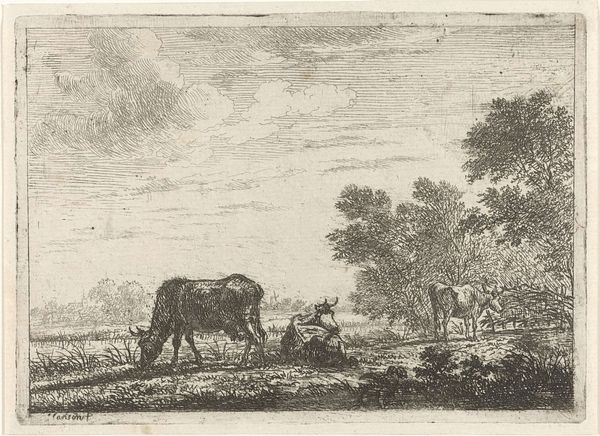
drawing, pencil, engraving
#
drawing
#
aged paper
#
light pencil work
#
pencil sketch
#
old engraving style
#
landscape
#
personal sketchbook
#
sketchwork
#
romanticism
#
pen-ink sketch
#
pencil
#
pen work
#
sketchbook drawing
#
engraving
#
realism
#
initial sketch
Dimensions: height 123 mm, width 210 mm
Copyright: Rijks Museum: Open Domain
Curator: This is "Herder kijkend naar kudde dieren" – “Shepherd Looking at a Herd of Animals” – a pencil and engraving by Frédéric Théodore Faber, created around 1806. It's currently held in the Rijksmuseum. Editor: My initial impression is one of pastoral serenity, perhaps a bit melancholic. The stark contrast, achieved with delicate pencil strokes, gives it a timeless quality. It reminds me of early photography in some strange way, how it almost romanticizes labor. Curator: It's fascinating to consider the broader socio-political implications of that “romanticization.” Agricultural life during Faber’s time was undergoing significant shifts. Rural communities were facing displacements due to land enclosure. Works like this, depicting idyllic scenes, can be viewed as complex commentaries on social anxieties. What purpose might these artistic renditions of shepherding fulfill when agricultural ways of life were constantly in turmoil? Editor: Interesting. I’m mostly stuck on the formal arrangement. The composition relies heavily on horizontal lines – the reclining animals, the distant horizon. Faber employs a kind of organized layering; the shapes are deceptively simple, but notice the way the animals are deliberately composed, directing the gaze. Do you think that Faber's deliberate approach offers an attempt to arrest some sense of order and continuity? Curator: Exactly! The arrangement feels constructed, and I find this revealing. The “natural” world is mediated, seen through a particular lens shaped by emerging ideas about class and rural identity. Faber places the viewer at a distance, observing, almost voyeuristically consuming, which tells its own story about access and ownership. I wonder, to what extent is it appropriate to analyze works, especially in this genre of "landscape," as bearing and informing cultural identity? Editor: I think it’s almost impossible not to read cultural undercurrents here, given its very constructed formalism. By highlighting the interplay of light and shadow across the bodies of the animals, Faber, for instance, achieves this incredibly quiet, dignified composition that transcends simple representation. It suggests, possibly, a more abstract understanding of existence through rural toil. Curator: It truly makes you reconsider your relation to nature. I see now how Faber might, intentionally or otherwise, pose difficult and interesting questions through form, content, and materiality. Editor: I agree. It’s through analyzing both the image itself and understanding its broader context that its true meaning reveals itself, even now, over two centuries later.
Comments
No comments
Be the first to comment and join the conversation on the ultimate creative platform.
